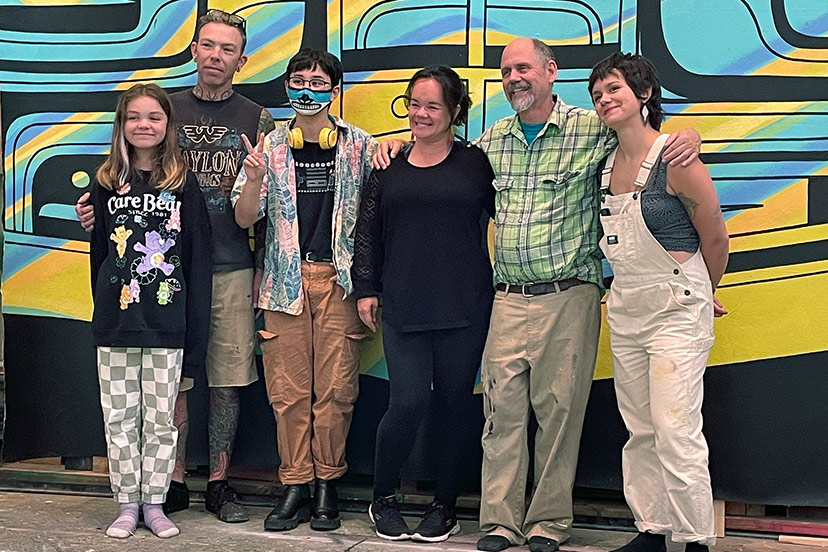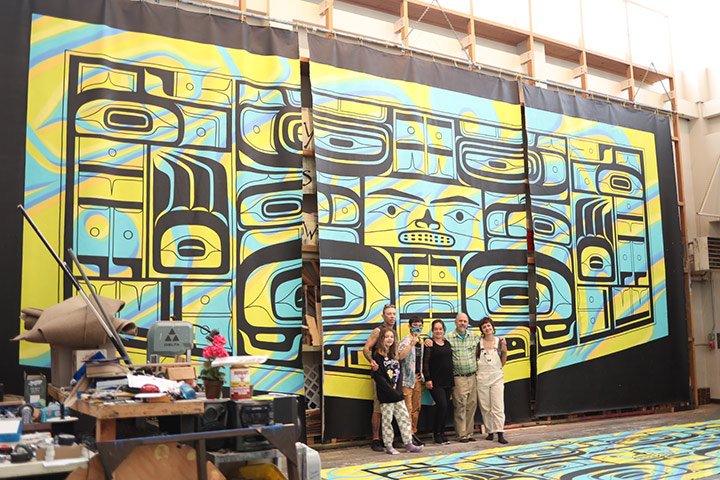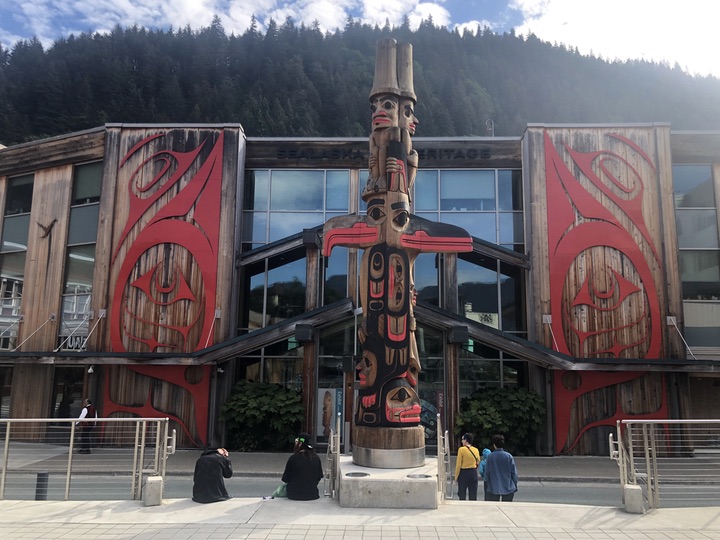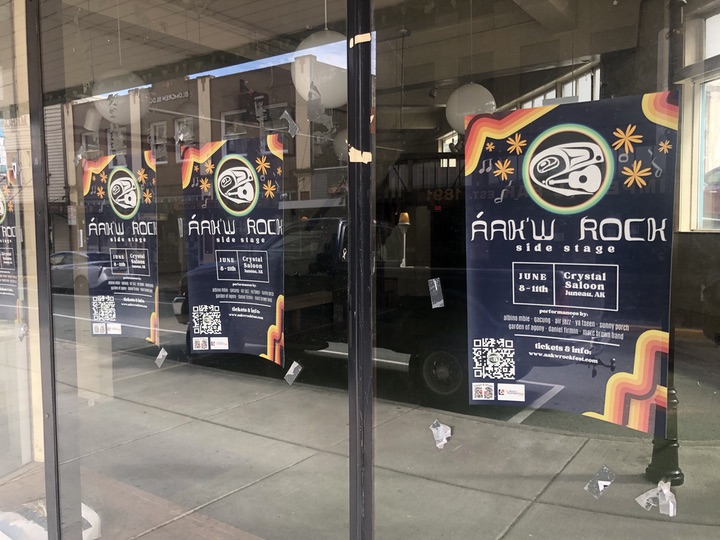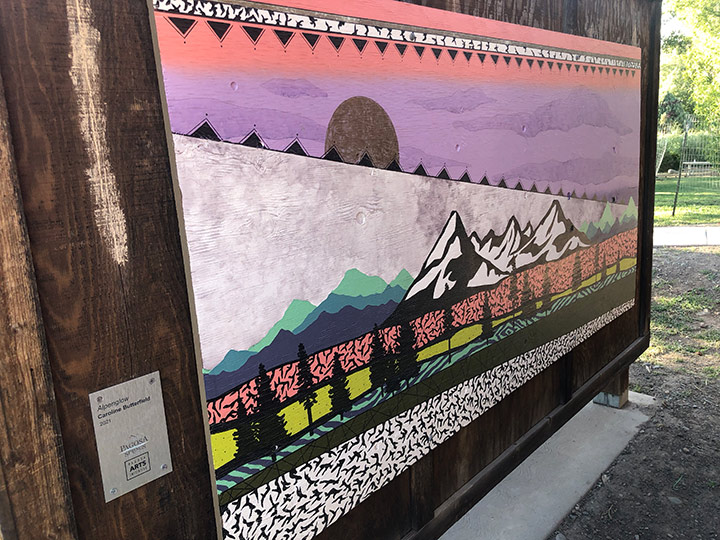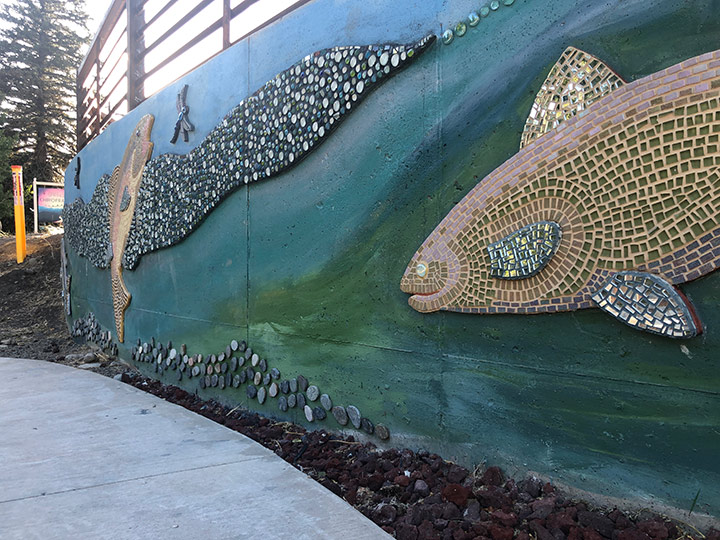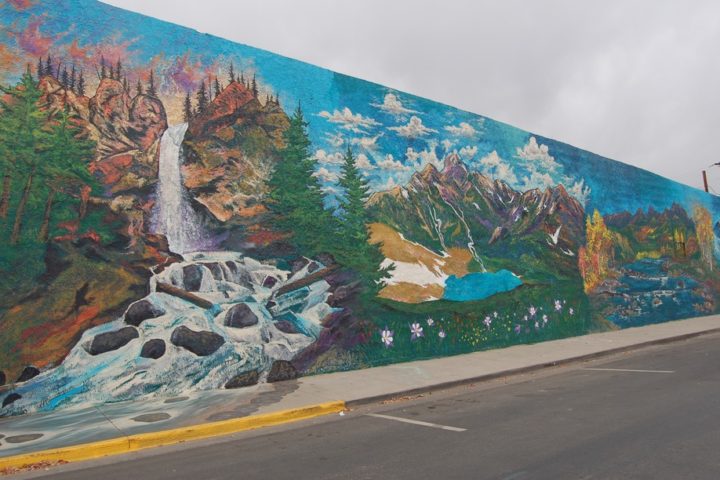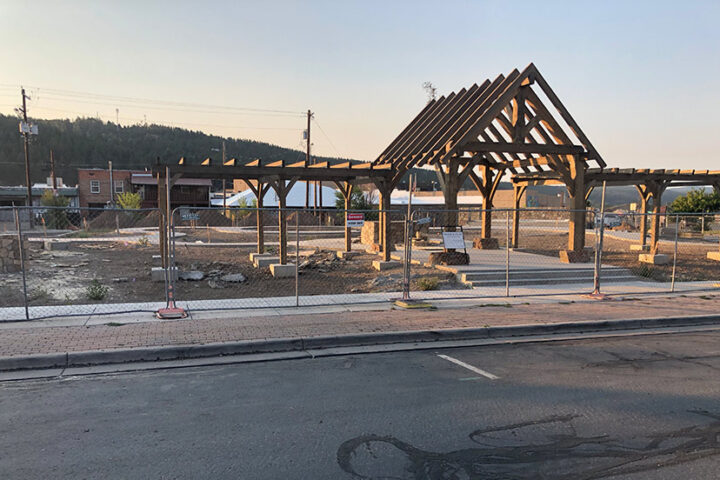PHOTO: The painting crew for Ursala Hudson’s Áak’w Rock music festival backdrops, from left: Amelie Haas, Chris Haas, Nicholas Hope, Lily Hope, Bill Hudson, Ursala Hudson. August 2023. Photo by Deanna Lampe.
A Daily Post reader contacted me yesterday, wondering if I were going to write about the house that fell into the Mendenhall River in Juneau, Alaska
That unfortunate occurrence was a topic of conversation at the two-family picnic I attended on Sunday afternoon. (Or maybe it was Sunday night? You can’t easily tell day from night in Alaska during the bright summer months.)
The mainstream media had shared the sad story of the demolished home, as did thousands of people on social media. It seems that a huge quantity of melted glacier water was released suddenly from a pool beneath the receding Mendenhall Glacier, and the resulting flood in the Mendenhall River eroded the soil from beneath two homes and a condominium. One of the homes fell into the river. There may be other homes along the river that will be condemned or forced to make repairs.
Some news commentators wanted to make this story about ‘climate change’… but the hydrologist with the National Weather Service (in the video above) felt that this particular event was not directly connected to a warming climate.
In the video, we see a shot of a sign showing where the front edge of the Mendenhall Glacier ice was, in 2011. But the glacier has receded more than a mile from where it was when I first arrived in Alaska in 1971. Dramatic melting of the glaciers in Southeast Alaska has been documented for hundreds of years, by the local Tlingit Indians and by European and American explorers.
But this story was not meant to be about receding ice. It was supposed to be about a revitalized culture.
I’m writing this final part of my ‘letter from Alaska’ from my home office in Pagosa Springs. The rest of my Pagosa family — Ursala, Chris, Amelie and Simone — are still up in Juneau, enjoying one of the town’s warmest, driest summers in many years.
We had been planning a trip to Juneau, as a summer 2023 vacation, but when Ursala got the commission to paint the backdrops for the Áak’w Rock music festival (scheduled for September 21-23 in Juneau), the vacation turned into a family “working vacation”.
Two weeks of painting contemporary Tlingit-Indian-inspired designs on massive sheets of canvas.
Yesterday in Part Three, I shared some photographs of public art that has been installed along the Juneau waterfront over the past decade, with a focus on the highly-stylized Indigenous art of the Tlingit and Haida Indians.
Totem poles, murals, decorated buildings.
These works of public art were not inexpensive — I would estimate the investments in public art in Juneau in the millions of dollars — but Alaska as a whole, and Juneau in particular, made a commitment, decades ago, to celebrate the art of the Indigenous peoples.
One of the primary funding sources for this investment has been the Sealaska Heritage Institute, which is funded mainly by Sealaska Corporation — the Native-owned corporation that manages the resources and wealth of the Tlingit and Haida Indians of southeast Alaska.
Those resources and that wealth resulted largely from the The Alaska Native Claims Settlement Act (ANCSA), signed into law by President Richard Nixon in 1971, constituting at the time the largest land claims settlement in U.S. history. ANCSA was intended to resolve long-standing issues surrounding Indigenous land claims in Alaska, as well as to stimulate economic development throughout Alaska.
The settlement established Alaska Native claims to the land by transferring titles to twelve Alaska Native regional corporations and over 200 local village corporations. Sealaska Corporation is one of those corporations, and its ultimate mission is to care for the economic and cultural needs and desirtes of its shareholders — the enrolled Tlingit and Haida Indians of southeast Alaska. Thus, the creation of Sealaska Heritage Foundation, with a focus on promoting the traditional language, arts, culture, and indigenous ‘way of life’ — in particular, perhaps, among the Indian youth.
Here’s the Sealaska Heritage building, in the heart of downtown Juneau.
The traditional ‘way of life’ among the Native peoples of Alaska was focused on hunting and gathering during the long summer days, and figuring out how to pass the time during the dark, cold, seemingly endless winters. Among the Tlingits, the development of highly stylized totem poles, regalia, and decorated household items filled the winter nights, along with social gatherings, storytelling, singing and dancing.
Community wealth was measured, not in ‘money’ but in stories, art, songs.
To some degree, that’s still a way of measuring wealth, in Juneau.
Yesterday, I took a walk through downtown Pagosa Springs…
…and snapped a few photos of the public art that has appeared in town over the past few years.
Here’s a photo of the privately-funded sculpture garden, now under construction on Pagosa’s Lewis Street, next to Bell Tower Park.
If I had to compare our current ‘public art culture’ in Pagosa Springs, with the ‘public arts culture’ in Juneau, Alaska, I would have to say that Pagosa is about where Juneau was, 50 years ago.
But maybe we are catching up, in terms of wealth?

